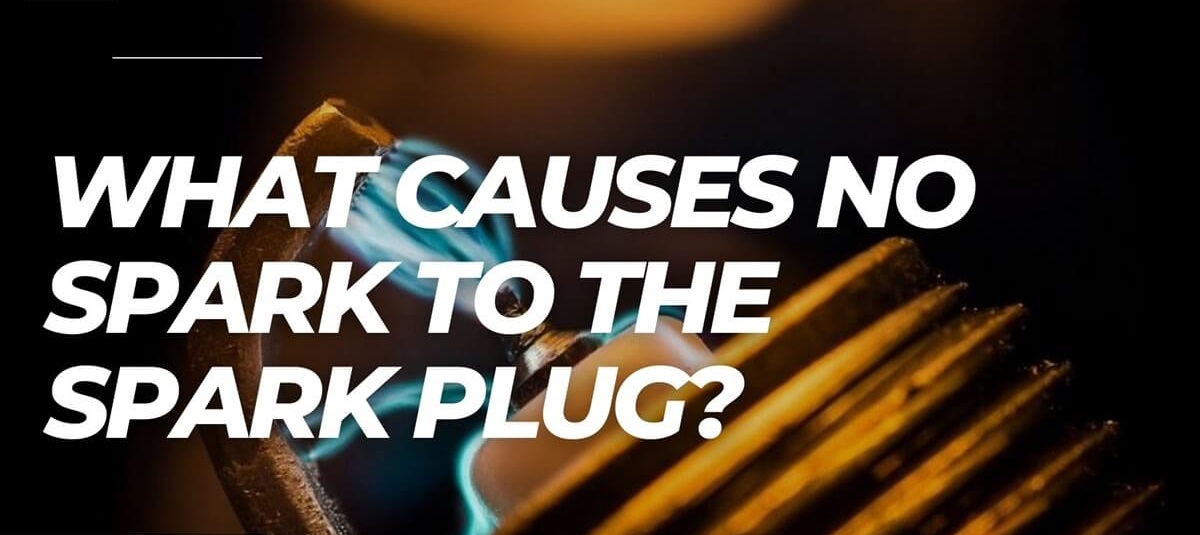No spark to spark plugs can stop your engine from starting. It’s a common issue for many drivers.
Understanding why spark plugs fail to spark is crucial for any car owner. Spark plugs are key to igniting the fuel-air mix in your engine. Without a proper spark, your car won’t run. Various factors can cause this issue, from faulty ignition coils to bad wiring.
Learning about these causes helps you troubleshoot and fix your vehicle. This knowledge can save you time and money at the mechanic. In this post, we’ll explore the common reasons behind no spark to spark plugs. You’ll gain insight into what to check and how to address these issues. Let’s dive into the details to keep your engine running smoothly.

Credit: www.cyclepedia.com
Battery Issues
A dead battery can stop your car from starting. No power means no spark to the spark plugs. The battery needs to be charged or replaced. Check the battery with a voltmeter. A healthy battery should read around 12.6 volts. Anything below 12 volts is bad. A jump start can help, but it is a temporary fix.
Corroded connections can block electricity flow. Look for white or greenish deposits on the battery terminals. Clean the connections with a wire brush. Use baking soda and water to remove corrosion. Make sure the connections are tight. Loose connections can cause intermittent power loss. This can prevent the spark plugs from firing.
Ignition Coil Problems
The ignition coil is very important. It provides the spark plugs with power. A faulty ignition coil can cause no spark. This means the engine won’t start. Sometimes, the coil gets damaged. Heat and wear can cause this. If the coil is faulty, it needs replacing.
To test the ignition coil, follow these steps:
- Turn off the car engine.
- Disconnect the coil from the spark plug.
- Use a multimeter to check the coil’s resistance.
- Compare the reading with the manufacturer’s specs.
If the reading is not correct, the coil is faulty. Replace the coil to fix the problem.
Distributor Cap Concerns
Issues with the distributor cap can prevent spark plugs from firing. Dirt, cracks, or worn contacts disrupt the spark. Regular inspection ensures reliable ignition.
Cracked Distributor Cap
A cracked distributor cap can cause major problems. Cracks allow electricity to escape. This stops the spark from reaching the plugs. The car might not start at all. Sometimes, the engine may misfire. Always check the cap for cracks. Replace the cap if you see any damage.
Moisture In Distributor Cap
Moisture in the distributor cap is another big issue. Water inside the cap can stop the spark. This happens often in wet weather. Condensation also causes problems. Moisture makes it hard for the spark to jump. Drying the cap might help. Use a dry cloth to wipe inside. Keep the cap clean and dry.
Spark Plug Wire Issues
Damaged wires can cause no spark to spark plugs. Wires may get frayed or cracked over time. This can lead to a loss of connection. As a result, the spark plug will not ignite. Regular inspection is important. Always check for visible signs of wear and tear.
Incorrect installation can also cause issues. If wires are not properly connected, the spark plug will not receive power. Always follow the manufacturer’s guidelines. Ensure each wire is securely attached. Double-check connections after installation. This helps prevent future problems.
Faulty Spark Plugs
Spark plugs wear out over time. The metal on the electrode erodes. This causes weak or no spark. Replacing them can fix the issue. Regular checks help to avoid this.
The gap between the spark plug electrodes must be correct. Too wide or too narrow gaps cause problems. A proper gap ensures a strong spark. Use a feeler gauge to measure the gap.

Credit: carstale.com
Engine Control Unit (ecu) Problems
The ECU controls the engine. A malfunctioning ECU can cause no spark. This means the engine won’t start. Faulty wiring or corroded connections can damage the ECU. Water damage can also cause problems. Sometimes, the ECU gets old and fails. This results in no spark to spark plugs. Replacing the ECU might be the only fix.
Diagnostic tools can check the ECU. Mechanics use these tools to find problems. They connect the tool to the car’s computer. The tool reads error codes. These codes tell what is wrong. Regular checks can prevent ECU problems. Always use a trusted mechanic for ECU diagnostics. This ensures the best results.
Preventative Maintenance Tips
Check your spark plugs often. Look for dirt or damage. Clean them if needed. Replace if you see wear. Dirty plugs can cause no spark. Cracked plugs are also a problem. Keep your engine clean too. Dirt can cause issues.
Change your spark plugs on time. Follow the car manual. Old plugs can fail. Worn-out plugs cause no spark. New plugs keep the engine running well. Good spark plugs save fuel too. Always use the right type for your car. Consult a mechanic if unsure.

Credit: www.youtube.com
Conclusion
Identifying no spark to spark plugs is crucial. It prevents engine problems. Common causes include faulty ignition coils, bad spark plugs, or damaged wires. Regular maintenance helps avoid these issues. Check connections and replace worn parts. Your vehicle’s performance depends on a healthy ignition system.
Keep it in top shape. Address any issues promptly. This ensures smooth rides and peace of mind. Always consult a professional for complex repairs. Stay vigilant and proactive. Your car will thank you.
